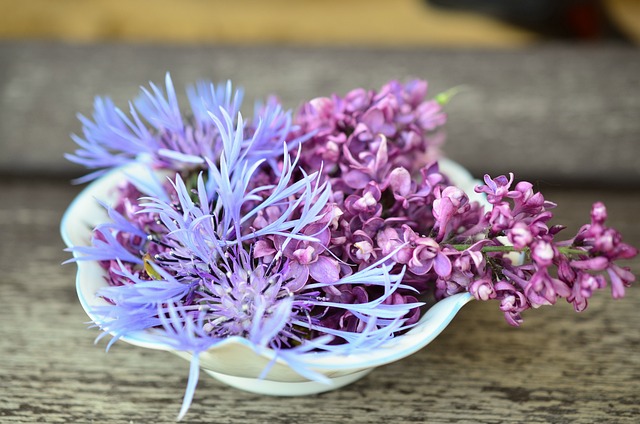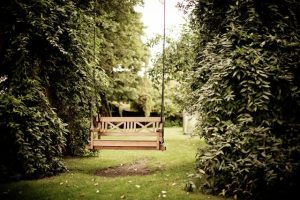Summer is almost here when the air is filled with the aroma of lilacs. The common lilac (Syringa vulgaris) produces copious amounts of fragrant flowers in May and June. These flowers have a warm, almond-like scent with a tinge of spice. This huge, low-maintenance deciduous shrub, which may also be planted as a small tree, is hardy and has just come back into style after being out of favor.

The majority of lilac (Syringa) species are native to Asia’s mountains, although S. vulgaris, the common garden variety, originates from the Balkans. Syringa stems were once used to make smoking pipes, so one of the popular names for the plant is pipe tree. The Greek word syrinx means pipe. After its bright purple-blue blossoms, the Persian word for bluish—nīlak—is where the more lovely term “lilac” originates.
S. vulgaris was first imported to Europe in 1563 by the Flemish herbalist and diplomat Ogier Ghiselin de Busbecq, who transported it from Istanbul to Vienna. He brought it to France seven years later, when it would have its most significant alteration. Approximately 200 of the roughly 2,000 different kinds of S. vulgaris were produced by three generations of the Lemoines, a single French family. The first, Victor Lemoine, is best known for his lilacs, but he also produced many beautiful plants, such as the imitation orange “Manteau d’Hermine” and the peony “Sarah Bernhardt.”
During the Franco-Prussian War in 1870, while he was marooned in his Nancy, France, house, he began to cross single-flowered S. vulgaris types with a double-flowered variety that was growing in his garden. Due to the height of the shrub and his bad vision, Marie-Louise, his wife, had to do the majority of the job. She dusted pollen on the blossoms while seated on a ladder while he provided directions from below. After a successful team effort, the first delicious double-flowered garden lilacs were created. Victor released 64 hybrids throughout the years, the majority of them were doubles and all had strong scents. Émile, their son, produced 140 more offspring, and his son Henri produced 10. They are referred to as the French lilacs when combined, and many of the most beautiful kinds are among them.
Which lilac cultivars to use
The Lemoines developed the three most commercially accessible varieties of common lilac: “Madame Lemoine” (white), “Charles Joly” (wine purple), and “Katherine Havemeyer” (pink lavender). These are all lovely plants with gorgeous double blooms. But if you’d rather explore for a lesser-known variety of S. vulgaris and want to escape the nightmare of buying a grafted lilac onto privet, it’s definitely worth buying from a specialist provider like The Gobbett Nursery. Growing atop privet, plants are not as resistant and may be difficult to reshape if they become lanky.
The magnificent “Souvenir d’Alice Harding” or “Monique Lemoine,” both bred by the Lemoines, are excellent choices for pure-white double blooms. “Krasavitsa Moskvy” is an exceptional variety that produces double white blooms from shell-pink buds. It was cultivated in the 1970s by Leonid Kolesnikov, who presumably used Lemoine hybrids in its breeding.
In urban gardens, white lilacs look exquisite both during the day and at night. The pale-lavender and blue Lemoine doubles, like “Président Grévy” and “Leon Gambetta,” are as stunning after dusk. Both of these classic hues and the pink Lemoine doubles “Montaigne” and “Émile Lemoine” look great in a rural garden.

Because of their striking color, the deep red varieties of S. vulgaris, like Kolesnikov’s single-flowered “Znamya Lenina,” are more difficult to incorporate into the garden. But if you put them next to silver foliage, their intensity will be lessened.
Unusual lilacs to be aware of
Although S. vulgaris is the perfect garden lilac, there are many amazing varieties to pick from if you’d want to try something more exotic. Reaching about 1 to 1.5 meters, the Korean lilac S. meyeri ‘Palibin’ makes an excellent low hedge, compact shrub, or pot plant in a small garden. It has cones of tiny lavender-pink flowers.
Forms of S. pubescens (particularly sugar-pink ‘Superba’ and pale-lavender ‘Miss Kim’) and white Persian lilac (S. x persica ‘Alba’), which are somewhat taller at two meters, make excellent back-of-border shrubs. Even larger, S. x chinensis, the Rouen lilac, is the progeny of S. vulgaris and S. x persica. Pink-purple S. x chinensis ‘Saugeana,’ with a maximum height of three meters, grows well as hedge or in a big garden. Similar in size, S. x josiflexa ‘Bellicent’ has beautiful clear-pink blooms in drooping plumes.
Although these substitutes have considerably smaller blooms and leaves than the Lemoine S. vulgaris hybrids, they nonetheless have spicy smells and are intriguing and visually appealing garden shrubs.
Guidelines for cultivating lilacs
Lilacs like neutral to alkaline soil that is rich and very well-drained, as well as sunlight and plenty of area to grow. Most soils may benefit from the addition of sand or grit, as well as organic matter (such compost made without peat) to increase drainage and nutrition. Dense clay, however, is inappropriate. Make an elevated bed out of humus-rich loam combined with sand and gravel if you’re on clay. Ferocious lilacs adore a yearly covering of compost and, should your soil have an acidic pH, a little addition of lime.
After blossoming, remove weak, damaged, and dead stems; cut branches by up to one-third; this will increase floral power and vitality. Always maintain S. vulgaris at a distance of around 2.5 meters. Pruning a mature shrub year after year is a more effective way to revitalize it than giving it a dramatic trim all at once.
When not in flower, lilacs might be a little boring, but you can add some interest to the bigger forms by putting a climber through them. Viticella clematis, like ‘Madame Julia Correvon,’ are perfect since they blossom from July through September, keeping your lilac bush looking lovely for many months.




